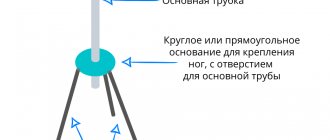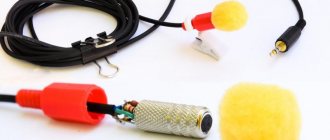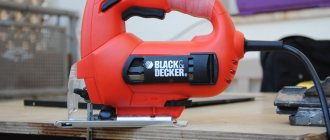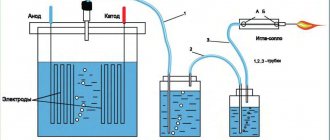Hello. Today we will build a Gauss cannon at home using parts that can easily be found in local stores. Using capacitors, a switch and a few other parts, we will create a launcher that can use electromagnetism to launch small nails up to a distance of about 3 meters. Let's get started!
Tips for using a homemade plasma cutter
In order for a homemade plasma cutter from a welding inverter to work effectively and for a long time, you should listen to the advice of specialists related to the operation of the device.
- It is recommended to have a certain number of gaskets that are used to connect the hoses. Their presence should especially be checked when the unit has to be transported frequently. In some cases, the absence of the necessary gasket will make the device impossible to use.
- Because the cutter nozzle is exposed to high temperatures, it will wear out and fail over time. Therefore, you should worry about purchasing spare nozzles in advance.
- When selecting components for a plasma cutter, you should consider how much power you want to get from the unit. First of all, this concerns the choice of a suitable inverter.
- When choosing an electrode for a burner, if you make it yourself, you should give preference to a material such as hafnium. This material does not emit harmful substances during heating. But it is still strongly recommended to use ready-made cutters manufactured at the factory, in which all parameters for air flow swirl are observed. A homemade plasmatron does not guarantee high-quality cutting and quickly breaks down.
As for safety rules, work should be carried out in special clothing that protects against splashes of hot metal. You should also wear chameleon welding goggles to protect your eyes.
Gauss Gun on AliExpress
Two-stage Gauss gun
- Copper enameled winding wires with a diameter of 0.8 mm
- Two SCR type thyristors
- Optical switch block
- 450V 1000uF capacitors installed
- Tubes with a diameter of 8 mm and a length of 200 mm
- Price about 1000 rubles.
Four stage Gauss gun
- The outer diameter of the tube is 10 mm and the inner diameter is 8 mm
- Need 12V lithium battery and 70W power supply
- Full set of voltage control, charging and discharging, lithium battery and built-in charger.
- Price about 10,000 rubles.
Multi-stage Gauss gun
- The most powerful specimens, having 6 stages and accelerating a metal projectile to the maximum energy permitted by law of 7 J.
- The total capacity of storage capacitors can exceed 10,000 microfarads.
- Price about 12,000 rubles.
Warning! The device is prohibited for sale or use by persons under 16 years of age, for adults only. You cannot shoot at people or animals. Do not touch circuit elements - high voltage.
History of creation
This type of rifle first appeared in the first part of “Stalker,” which was called “Shadow of Chernobyl.” At the penultimate location “Pripyat” the player was met by multiple enemy forces, they were everywhere, even on the roofs of abandoned houses, from which they fired at us with Gauss. The rifle itself is incredibly rare, and if you didn’t kill the Monolith correctly, then we can safely say that you won’t touch it again in the game. There is also a chance that the corpse of this fighter will fall, but there will be no cartridges for the rifle at all. All this is due to the fact that the development of the first part was carried out in incredible haste, many types of weapons were cut out, not to mention locations, cars and much more.
If we talk about mentions of this rifle, then in the “Dark Valley” location, right opposite the bandits’ base, we could save a stalker from a bloodsucker, for which he thanks us with the information, they say, on a pig farm they sell a Gauss gun for only 800 rubles. We go there, give the stalkers 800 rubles, which at the very beginning of the game can change a lot, but in return they give us nothing, and even more: we are kicked out of the territory of the pig farm, because... They don’t have any Gauss rifle, and this money will go to charity. After this, you can calmly kill them, and the “Ghoul” stalker will drop a special “Viper” silent rifle.
This all happened in the first part, but now in the second, whose name is “Clear Sky”, you can quite easily find this rifle. The right to purchase it is given to players whose actions are impeccable (statistics can be viewed in the PDA), after which every merchant will happily sell you Gauss and the first generation exoskeleton.
“Call of Pripyat” tried to be as similar as possible to the first part, which, in fact, happened, because in this part the rifle is taken again from the roof and again from the corpse of a fallen “Monolith” soldier. After picking it up, a special quest is activated, which we will talk about a little later.
AS A HYPOTHESIS - FOR REFLECTION...
To take a break from the topic of Gauss gans, I would like to offer for discussion a couple of my ideas, analogues of which I have not seen on the Internet.
▍ 1. Internal combustion machine gun?!
What if I told you that right under your nose there is an almost ready-made device that allows you to implement high-speed shooting with a certain charge, with good accuracy and power?
The rate of fire can reach 6000 rounds per minute or more. If we look at a conventional two-stroke internal combustion engine (and, in principle, at any engine), it is a device that serves to perform useful work by extracting the necessary power from a rotating shaft. What if the power is taken not from the shaft, but directly from the cylinder?
How: a quick-acting valve is mounted in the cylinder, which opens for a short time, at the moment of combustion of the mixture, when the pressure in the cylinder is maximum (a conventional two-stroke internal combustion engine, which is used in lawn mowers or trimmers, develops a pressure of 60 atmospheres - in the cylinder, at the moment the mixture flashes).
The operating algorithm of such a valve should still be selected, for example, it can work in 2 strokes: so that one revolution of the engine shaft is used to maintain rotation, and the next revolution and, accordingly, the flash is used to select part of the high-pressure gases from the cylinder - to throw some charge.
The power take-off must be carried out in such a way and in such volumes that it allows the work of throwing a charge to be carried out, and, at the same time, does not disrupt the normal operation of the engine as such!
As such a fast-acting valve, you could try to use something similar to an electromagnetic valve, which some companies are now developing for their cars:
Thus, it turns out that there is an unlimited source of high-pressure gases, which will allow high-speed burst fire or single shots. The supply of shots, in fact, is limited only by the supply of projectile charges, since the fuel will run out much later (by the way, the charges can be supplied due to the operation of a certain feeding device driven by a rotating shaft)!
Knowledgeable people will say: “Well, that’s only 60 bar!” Even a CO2 canister has 70 bar...” It's not just about the pressure, but also about the area it affects. In a nutshell: smaller bullet – more pressure needed. More bullet means less pressure.
The following historical excursion would be appropriate here:
Girardoni air rifle.
In 1779, the Austrian mechanic Bartolomeo Girardoni (in Austria he was considered a Tyrolean, although he was Italian by origin) presented Joseph II, Archduke of Austria with a copy of a “repeat air gun,” which became perhaps the most popular military air weapon.Image source: www.drive2.ru
It would be more accurate to call this unique gun a magazine-loading breech-loading air rifle with pre-pumping. The active Archduke and members of the Military Council appreciated the idea. Considering the rate of fire of muskets of that time (3-4 rounds per minute), his sample simply plunged everyone into a state of shock with its twenty rounds per minute. Joseph the Second, calculating that 500 soldiers with such weapons would exceed the same number of flint barrels by at least five times in total firepower, ordered the rearmament of the army. However, due to the very labor-intensive technology and extremely high cost of such rifles, the army did not completely switch to new weapons, and only about 1,500 barrels were produced. Also, their initial desire to equip army rangers with a rifle was dashed by the relatively low target firing range, and the rifle (gun) was adopted by a special unit of the border guard. The Girardoni rifle had an octagonal rifled barrel of 13 mm caliber, replaceable butt-cylinder, impact metering valve and tubular magazine for 20 round bullets.
Image source:The conical cylinder was connected to the breech on a thread, the connection was sealed with a water-soaked leather cuff of the butt-cylinder. Air was pumped into the balloon with a hand pump (this required about 1,500 pumps), the pressure in it reached 33 atmospheres
, which was enough to give a 10-gram bullet an initial speed of about 200 m/s (muzzle energy - 200 J).
One cylinder was enough for 20 sufficiently lethal shots, although the ballistics, of course, changed from shot to shot - the first 10 bullets flew up to 150 steps, the next ones fell closer. The Austrian border guard riflemen used Girardoni rifles from 1790 to 1815, just during the coalition wars with France. In battles with French troops, they hit officers and artillery personnel at 100-150 steps. It is clear that such an insidious weapon irritated the French very much - Napoleon decided to give the order to shoot or hang on the spot shooters captured with an air gun in their hands.
Thus, it becomes clear that 60 atmospheres is very serious, when even 33 a...











